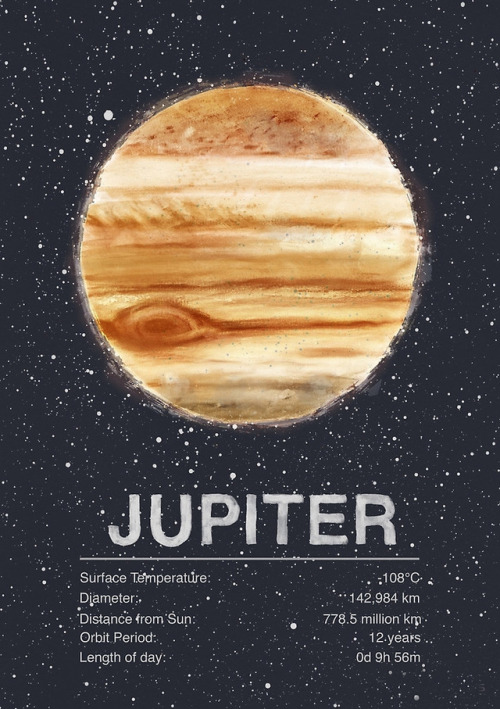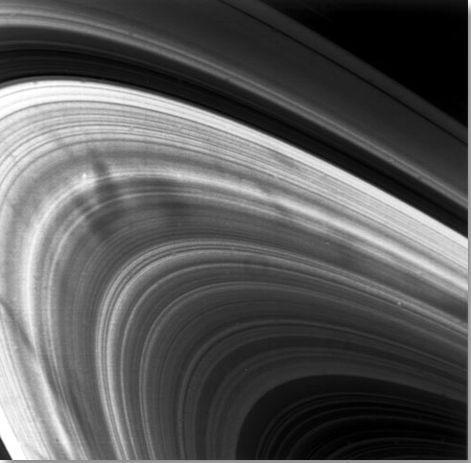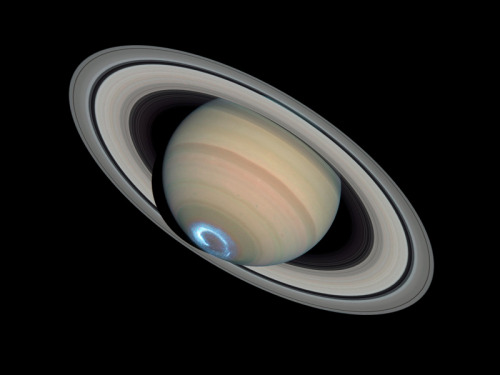Our Amazing Solar System!








Our Amazing Solar System!
More Posts from Sergioballester-blog and Others
Cassini Spacecraft: Top Discoveries
Our Cassini spacecraft has been exploring Saturn, its stunning rings and its strange and beautiful moons for more than a decade.

Having expended almost every bit of the rocket propellant it carried to Saturn, operators are deliberately plunging Cassini into the planet to ensure Saturn’s moons will remain pristine for future exploration – in particular, the ice-covered, ocean-bearing moon Enceladus, but also Titan, with its intriguing pre-biotic chemistry.
Let’s take a look back at some of Cassini’s top discoveries:
Titan

Under its shroud of haze, Saturn’s planet-sized moon Titan hides dunes, mountains of water ice and rivers and seas of liquid methane. Of the hundreds of moons in our solar system, Titan is the only one with a dense atmosphere and large liquid reservoirs on its surface, making it in some ways more like a terrestrial planet.

Both Earth and Titan have nitrogen-dominated atmospheres – over 95% nitrogen in Titan’s case. However, unlike Earth, Titan has very little oxygen; the rest of the atmosphere is mostly methane and traced amounts of other gases, including ethane.

There are three large seas, all located close to the moon’s north pole, surrounded by numerous smaller lakes in the northern hemisphere. Just one large lake has been found in the southern hemisphere.
Enceladus

The moon Enceladus conceals a global ocean of salty liquid water beneath its icy surface. Some of that water even shoots out into space, creating an immense plume!

For decades, scientists didn’t know why Enceladus was the brightest world in the solar system, or how it related to Saturn’s E ring. Cassini found that both the fresh coating on its surface, and icy material in the E ring originate from vents connected to a global subsurface saltwater ocean that might host hydrothermal vents.

With its global ocean, unique chemistry and internal heat, Enceladus has become a promising lead in our search for worlds where life could exist.
Iapetus

Saturn’s two-toned moon Iapetus gets its odd coloring from reddish dust in its orbital path that is swept up and lands on the leading face of the moon.

The most unique, and perhaps most remarkable feature discovered on Iapetus in Cassini images is a topographic ridge that coincides almost exactly with the geographic equator. The physical origin of the ridge has yet to be explained…

It is not yet year whether the ridge is a mountain belt that has folded upward, or an extensional crack in the surface through which material from inside Iapetus erupted onto the surface and accumulated locally.
Saturn’s Rings

Saturn’s rings are made of countless particles of ice and dust, which Saturn’s moons push and tug, creating gaps and waves.

Scientists have never before studied the size, temperature, composition and distribution of Saturn’s rings from Saturn obit. Cassini has captured extraordinary ring-moon interactions, observed the lowest ring-temperature ever recorded at Saturn, discovered that the moon Enceladus is the source for Saturn’s E ring, and viewed the rings at equinox when sunlight strikes the rings edge-on, revealing never-before-seen ring features and details.

Cassini also studied features in Saturn’s rings called “spokes,” which can be longer than the diameter of Earth. Scientists think they’re made of thin icy particles that are lifted by an electrostatic charge and only last a few hours.
Auroras

The powerful magnetic field that permeates Saturn is strange because it lines up with the planet’s poles. But just like Earth’s field, it all creates shimmering auroras.

Auroras on Saturn occur in a process similar to Earth’s northern and southern lights. Particles from the solar wind are channeled by Saturn’s magnetic field toward the planet’s poles, where they interact with electrically charged gas (plasma) in the upper atmosphere and emit light.
Turbulent Atmosphere

Saturn’s turbulent atmosphere churns with immense storms and a striking, six-sided jet stream near its north pole.

Saturn’s north and south poles are also each beautifully (and violently) decorated by a colossal swirling storm. Cassini got an up-close look at the north polar storm and scientists found that the storm’s eye was about 50 times wider than an Earth hurricane’s eye.

Unlike the Earth hurricanes that are driven by warm ocean waters, Saturn’s polar vortexes aren’t actually hurricanes. They’re hurricane-like though, and even contain lightning. Cassini’s instruments have ‘heard’ lightning ever since entering Saturn orbit in 2004, in the form of radio waves. But it wasn’t until 2009 that Cassini’s cameras captured images of Saturnian lighting for the first time.

Cassini scientists assembled a short video of it, the first video of lightning discharging on a planet other than Earth.

Cassini’s adventure will end soon because it’s almost out of fuel. So to avoid possibly ever contaminating moons like Enceladus or Titan, on Sept. 15 it will intentionally dive into Saturn’s atmosphere.

The spacecraft is expected to lose radio contact with Earth within about one to two minutes after beginning its decent into Saturn’s upper atmosphere. But on the way down, before contact is lost, eight of Cassini’s 12 science instruments will be operating! More details on the spacecraft’s final decent can be found HERE.
Make sure to follow us on Tumblr for your regular dose of space: http://nasa.tumblr.com
Launching of the space shuttle Atlantis.

Grid fin hydraulic pump stalled, causing a soft water landing 🚀 POV shot.
Still most likely being reused in a CRS mission 🤘🏻




jupiter

Welcome to Mars, Percy!
February 18, 2021 - @nasa successfully landed its new robotic rover ‘Perseverance’ on Mars, a mission to directly study if there was ever life on the planet.

The Moon with the ISS transitioning in front of it. Amazing view considering the ISS moves over and past it in a matter of seconds.

It was time for their close-up. Two days ago Jupiter and Saturn passed a tenth of a degree from each other in what is known a Great Conjunction. Although the two planets pass each other on the sky every 20 years, this was the closest pass in nearly four centuries. Taken early in day of the Great Conjunction, the featured multiple-exposure combination captures not only both giant planets in a single frame, but also Jupiter's four largest moons (left to right) Callisto, Ganymede, Io, and Europa -- and Saturn's largest moon Titan.
Image Credit: Damian Peach

Saturn by europeanspaceagency
Celebrating Five Years at Jupiter!
We just released new eye-catching posters and backgrounds to celebrate the five-year anniversary of Juno’s orbit insertion at Jupiter in psychedelic style.

On July 4, 2016, our Juno spacecraft arrived at Jupiter on a mission to peer through the gas giant planet’s dense clouds and answer questions about the origins of our solar system. Since its arrival, Juno has provided scientists a treasure trove of data about the planet’s origins, interior structures, atmosphere, and magnetosphere.

Juno is the first mission to observe Jupiter’s deep atmosphere and interior, and will continue to delight with dazzling views of the planet’s colorful clouds and Galilean moons. As it circles Jupiter, Juno provides critical knowledge for understanding the formation of our own solar system, the Jovian system, and the role giant planets play in putting together planetary systems elsewhere.
Get the posters and backgrounds here!
For more on our Juno mission at Jupiter, follow NASA Solar System on Twitter and Facebook.
Make sure to follow us on Tumblr for your regular dose of space!

Saturn Aurora.
Credit: NASA, ESA, J Clarke and Z Levay
-
 deepartisandreamshoe liked this · 3 months ago
deepartisandreamshoe liked this · 3 months ago -
 rossyday liked this · 1 year ago
rossyday liked this · 1 year ago -
 beta-isaac-lahey liked this · 1 year ago
beta-isaac-lahey liked this · 1 year ago -
 rafulmalajor liked this · 1 year ago
rafulmalajor liked this · 1 year ago -
 prjulioca liked this · 2 years ago
prjulioca liked this · 2 years ago -
 wingeddonutathleteturkey liked this · 2 years ago
wingeddonutathleteturkey liked this · 2 years ago -
 alfsanpol liked this · 2 years ago
alfsanpol liked this · 2 years ago -
 mellowhollywoodblackmetalroad liked this · 2 years ago
mellowhollywoodblackmetalroad liked this · 2 years ago -
 serendepianne liked this · 2 years ago
serendepianne liked this · 2 years ago -
 gloria-mature18265-blog liked this · 3 years ago
gloria-mature18265-blog liked this · 3 years ago -
 baddeststudpapi reblogged this · 3 years ago
baddeststudpapi reblogged this · 3 years ago -
 socallme-q liked this · 3 years ago
socallme-q liked this · 3 years ago -
 socallme-q reblogged this · 3 years ago
socallme-q reblogged this · 3 years ago -
 the-floppa-k1ller liked this · 3 years ago
the-floppa-k1ller liked this · 3 years ago -
 simpformoonkight liked this · 3 years ago
simpformoonkight liked this · 3 years ago -
 tepeswitch reblogged this · 3 years ago
tepeswitch reblogged this · 3 years ago -
 mdsti liked this · 3 years ago
mdsti liked this · 3 years ago -
 fhernando-rs reblogged this · 3 years ago
fhernando-rs reblogged this · 3 years ago